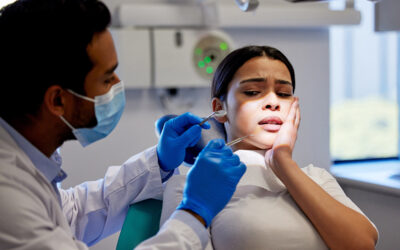Winter season brings significant changes in the weather. Even though chilly temperatures are enjoyable, it can bring several kinds of health consequences. Cold weather can have a significant impact on your oral health, affecting your teeth and gums as well, increasing the visits to dentists and oral hygienists. Therefore, maintaining good oral hygiene is crucial to prevent severe dental problems. Treatment for dental issues varies depending on the severity and the type of injury. Insurance reimbursement for different types of dental conditions during the winter season can be challenging. Dental offices and dental billing companies must be up-to-date with the correct medical and dental codes and payer guidelines to ensure accurate claim submission.
Common Dental Problems That Occur During Winter
Here discussed are five common dental problems that occur during winter and their dental codes-
Cold Sores – Also called fever blisters, cold sores are tiny, fluid-filled blisters on and around the lips. These are viral infections that are often grouped together in patches. Cold sores usually heal in two to three weeks without leaving a scar.
ICD-10 Codes
- B00 Herpesviral [herpes simplex] infections
- B00.0 Eczema herpeticum
- B00.1 Herpesviral vesicular dermatitis
- B00.9 Herpesviral infection, unspecified
CDT Code
- D7465- Destruction of Lesion
Tooth Sensitivity – Tooth sensitivity or “dentin hypersensitivity,” refers to pain (sharp, sudden and shooting pain) or discomfort in one or more teeth as a response to certain stimuli, such as hot or cold temperatures. The condition can affect one tooth, several teeth, or all the teeth together; it may either be temporary or a chronic problem. Treatment will depend on the specific factors causing the sensitivity. Medical codes for sensitive teeth include –
ICD-10 Codes
- K03.89 Other specified diseases of hard tissues of teeth
- K03.9 Disease of hard tissues of teeth, unspecified
CDT Codes
- D4270-Pedicle soft tissue graft
- D4273 – Autogenous connective tissue graft procedure (including donor and recipient surgical sites) first tooth, implant, or edentulous tooth position in graft
- D4275 Soft tissue allograft
- D4276 Combined connective tissue and double pedicle graft, per tooth
- D4283 Autogenous connective tissue graft procedure (including donor and recipient surgical sites)-each additional contiguous tooth, implant or edentulous tooth position in same graft site
- D4285 Non‐Autogenous connective tissue graft procedure (including recipient surgical site and donor material) – each additional contiguous tooth, implant or edentulous tooth position in same graft site
- D3331 Treatment of root canal obstruction; non-surgical access
- D3346 Retreatment of previous root canal therapy – anterior
- D3347 Retreatment of previous root canal therapy – bicuspid
- D3348 Retreatment of previous root canal therapy – molar
Dental Cavity – Also called tooth decay or dental caries, the condition permanently causes damage to the hard surface of the teeth. It is caused by a combination of factors, including bacteria in the mouth; frequent snacking, sipping sugary drinks and not cleaning the teeth well. If left untreated, tooth decay can cause pain, infection, and in extreme cases tooth loss. Treatment options include – fillings (also called restorations), tooth extraction, root canals, crowns and fluoride treatments.
ICD-10 Codes
- K02 Dental caries
- K02.3 Arrested dental caries
- K02.5 Dental caries on pit and fissure surface
- K02.51 Dental caries on pit and fissure surface, limited to enamel
- K02.52 Dental caries on pit and fissure surface, penetrating into dentin
- K02.53 Dental caries on pit and fissure surface, penetrating into pulp
- K02.6 Dental caries on smooth surface
- K02.61 Dental caries on smooth surface, limited to enamel
- K02.62 Dental caries on smooth surface, penetrating into dentin
- K02.63 Dental caries on smooth surface, penetrating into pulp
- K02.7 Dental root caries
- K02.9 Dental caries, unspecified
CDT Codes
- D1206 topical application of fluoride varnish
- D1208 topical application of fluoride – excluding varnish
- D1351 sealant – per tooth
- D1353 sealant repair – per tooth
- D1352 preventive resin restoration in a moderate to high caries risk patient – permanent tooth
- D1354 interim caries arresting medicament application – per tooth
- D1355 caries preventive medicament application – per tooth
Canker Sores – Canker sores are small, shallow lesions that develop on the soft tissues in the mouth or at the base of the gums. Also called aphthous ulcer or aphthous stomatitis, these sores may tend to peak during winter months due to the harsh dry air that makes soft mouth tissues more prone to injury and infection. The condition may occur on the tongue and on the inside linings of the cheeks, lips and throat.
ICD-10 Codes
- K13.7 Other and unspecified lesions of oral mucosa
- K13.70 Unspecified lesions of oral mucosa
- K13.79 Other lesions of oral mucosa
Gum Recession – Winter colds and flu can weaken the immune system and leave the door open for bacterial growth in the gums, leading to gum infection and inflammation. Gum recession occurs when the gums recede or wear away, exposing the pink tissue that covers the root of the teeth. When the gums recede, gaps can form between the gum and tooth, allowing disease-causing bacteria to build up. Also called receding gums, the condition occurs due to poor oral health, which may in turn lead to tooth loss.
ICD-10 Codes
- K06.0 Gingival recession
- K06.01 Gingival recession, localized
- K06.010 Localized gingival recession, unspecified
- K06.011 Localized gingival recession, minimal
- K06.012 Localized gingival recession, moderate
- K06.013 Localized gingival recession, severe
- K06.02 Gingival recession, generalized
- K06.020 Generalized gingival recession, unspecified
- K06.021 Generalized gingival recession, minimal
- K06.022 Generalized gingival recession, moderate
- K06.023 Generalized gingival recession, severe
Maintaining good oral hygiene and attending regular dental checkups can help prevent, slow, or stop the occurrence of several dental problems in the long run. Billing and coding different oral, dental conditions can be quite challenging. Proper dental insurance verification is crucial for practices to ensure that the patient has coverage for the treatments being provided. Practices can consider choosing a reliable dental billing company to handle all of their dental insurance verification needs.




